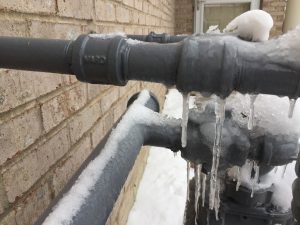Ways to Protect Your Pipes from Cold Weather: Expert Advice
Ways to Protect Your Pipes from Cold Weather: Expert Advice
Blog Article
They are making a number of great observations about Winter Plumbing Precautions: Preventing Frozen Pipes in general in the article in the next paragraphs.

Winter can ruin your pipes, especially by freezing pipes. Here's just how to avoid it from happening and what to do if it does.
Intro
As temperatures decline, the risk of icy pipes boosts, possibly causing costly repair services and water damages. Comprehending just how to prevent frozen pipes is crucial for property owners in cold environments.
Recognizing Frozen Pipes
What triggers pipes to freeze?
Pipelines ice up when revealed to temperatures below 32 ° F (0 ° C) for extended periods. As water inside the pipes freezes, it increases, putting pressure on the pipeline walls and potentially causing them to burst.
Risks and problems
Icy pipelines can bring about water system disruptions, residential or commercial property damages, and expensive repair services. Burst pipes can flooding homes and create comprehensive architectural damages.
Indications of Frozen Pipes
Determining frozen pipelines early can prevent them from bursting.
How to determine icy pipelines
Seek lowered water circulation from taps, uncommon smells or sounds from pipelines, and noticeable frost on revealed pipelines.
Avoidance Tips
Protecting prone pipes
Wrap pipes in insulation sleeves or utilize heat tape to protect them from freezing temperatures. Concentrate on pipes in unheated or exterior areas of the home.
Home heating strategies
Maintain interior rooms adequately warmed, specifically areas with plumbing. Open up cabinet doors to permit warm air to circulate around pipelines under sinks.
Securing Outdoor Plumbing
Yard hose pipes and outdoor taps
Disconnect and drain pipes garden tubes before winter months. Set up frost-proof spigots or cover outside taps with shielded caps.
What to Do If Your Pipelines Freeze
Immediate actions to take
If you presume icy pipelines, maintain faucets open up to soothe stress as the ice thaws. Utilize a hairdryer or towels taken in warm water to thaw pipelines slowly.
Long-Term Solutions
Structural adjustments
Consider rerouting pipelines far from exterior walls or unheated locations. Add added insulation to attic rooms, basements, and crawl spaces.
Updating insulation
Invest in premium insulation for pipes, attic rooms, and walls. Correct insulation helps maintain consistent temperature levels and reduces the risk of frozen pipes.
Conclusion
Avoiding icy pipelines needs positive procedures and quick reactions. By understanding the reasons, indications, and preventive measures, homeowners can shield their pipes throughout winter.
5 Ways to Prevent Frozen Pipes
Drain Outdoor Faucets and Disconnect Hoses
First, close the shut-off valve that controls the flow of water in the pipe to your outdoor faucet. Then, head outside to disconnect and drain your hose and open the outdoor faucet to allow the water to completely drain out of the line. Turn off the faucet when done. Finally, head back to the shut-off valve and drain the remaining water inside the pipe into a bucket or container. Additionally, if you have a home irrigation system, you should consider hiring an expert to clear the system of water each year.
Insulate Pipes
One of the best and most cost-effective methods for preventing frozen water pipes is to wrap your pipes with insulation. This is especially important for areas in your home that aren’t exposed to heat, such as an attic. We suggest using foam sleeves, which can typically be found at your local hardware store.
Keep Heat Running at 65
Your pipes are located inside your walls, and the temperature there is much colder than the rest of the house. To prevent your pipes from freezing, The Insurance Information Institute suggests that you keep your home heated to at least 65 degrees, even when traveling. You may want to invest in smart devices that can keep an eye on the temperature in your home while you’re away.
Leave Water Dripping
Moving water — even a small trickle — can prevent ice from forming inside your pipes. When freezing temps are imminent, start a drip of water from all faucets that serve exposed pipes. Leaving a few faucets running will also help relieve pressure inside the pipes and help prevent a rupture if the water inside freezes.
Open Cupboard Doors
Warm your kitchen and bathroom pipes by opening cupboards and vanities. You should also leave your interior doors ajar to help warm air circulate evenly throughout your home.
.jpg)
As a person who reads about Prevent Frozen Pipes , I assumed sharing that excerpt was important. In case you liked our blog posting if you please make sure you remember to pass it around. Thanks a bunch for your time. Come back soon.
Schedule Service Pickup Report this page